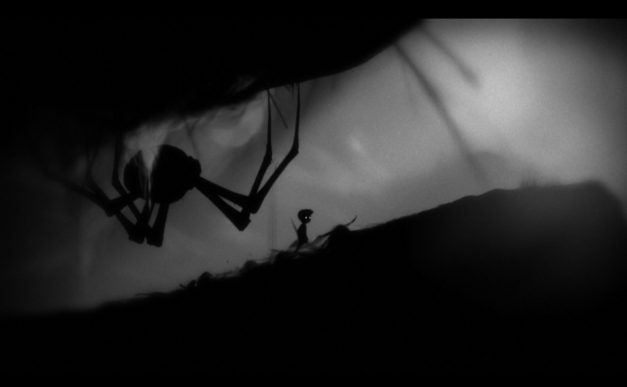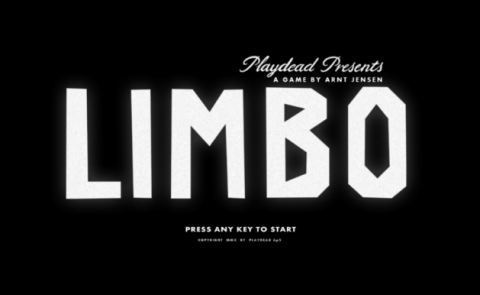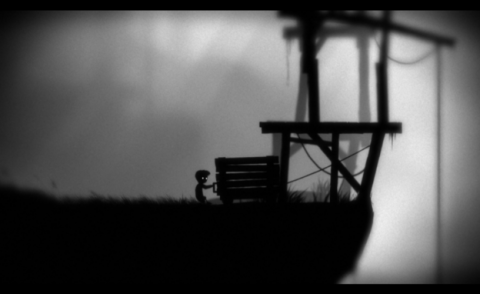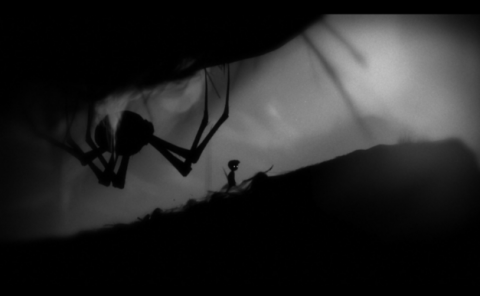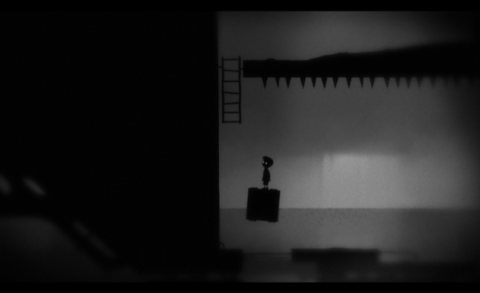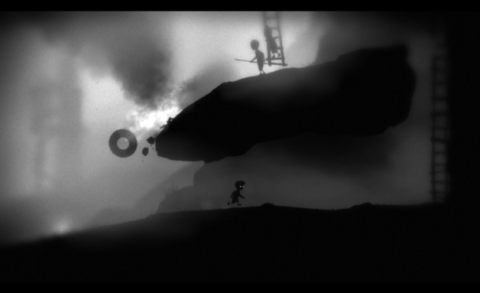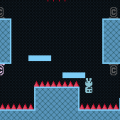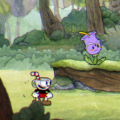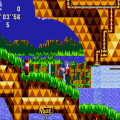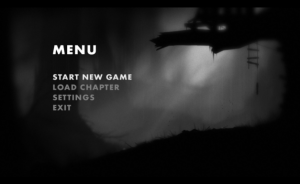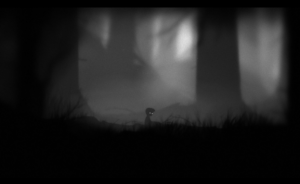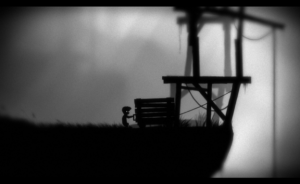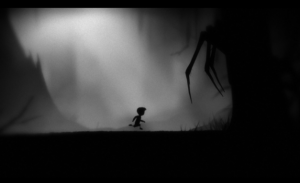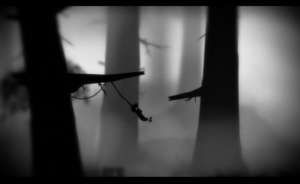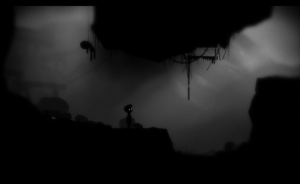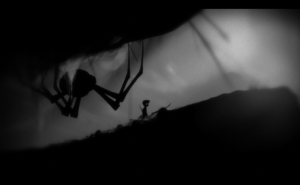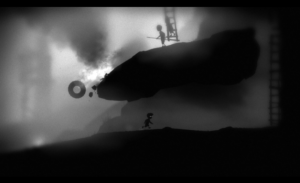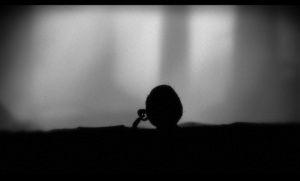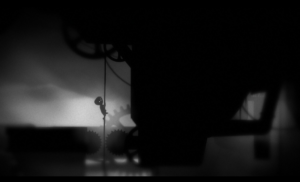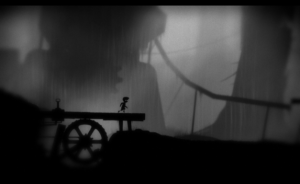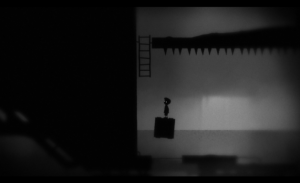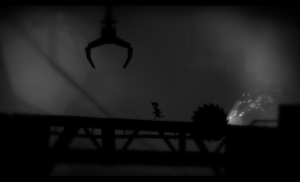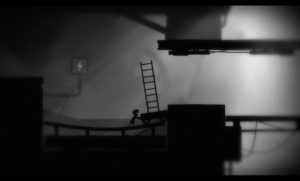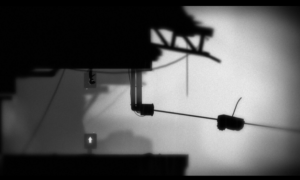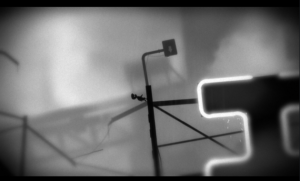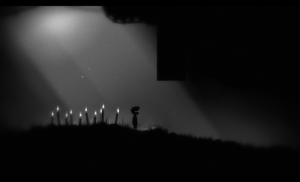LIMBO is the debut title from Playdead ApS, a Copenhagen-based development team headed by former IO Interactive (the folks behind Hitman) developer Arnt Jensen, who came up with the idea for LIMBO back in 2004 and teamed up with Dino Patti to form the company in 2006 for more or less the sole purpose of developing this one game. As the project grew and they gained more grants and investments, they expanded to hire more people, perhaps most notably Jeppe Carlsen, the lead gameplay designer of LIMBO who went on to release rhythm platformer 140 and twin-stick shooter THOTH.
LIMBO has an instantly recognizable monochrome visual style, and it fits the tone of the game perfectly that the only way to discern objects, obstacles and enemies is that they are a slightly lighter or darker shade of grey than the world around them. Despite your controls being limited to simple movement, jumping, and interacting with objects like pulling a lever or pushing a box, the animation is always fluid and the game is directed excellently, with the camera often zooming in close enough to feel claustrophobic, but at other times giving you such a large view of the wide open, empty world that it really forces home how isolated you are.
Speaking of which, the story in this game is simple, at least on the surface. “Uncertain of his sister’s fate, a boy enters LIMBO.” That’s it. That’s all you’re getting, and with no hidden documents to find, or spoken dialogue in its entire duration, or inclusion of any language at all other than a broken-down ‘HOTEL’ sign you reach around the halfway point of the game, it’s easily one of the most minimalist storytelling experiences you’ll ever play; and yet, there’s still just enough present that I don’t want to spoil the ending of this game that came out ten years ago, because on the off-chance that you haven’t played it yet, you should really see it for yourself.
The worldbuilding is phenomenal, and LIMBO crafts its unnerving atmosphere by combining two of the most primitive fears known to man; fear that everything and everyone is trying to kill you, and fear that, well… everyone can’t be trying to kill you, because there is no ‘everyone’, and you are utterly, entirely, inescapably alone. And despite both of these fears almost contradicting each other, they work surprisingly well in tandem due to the amazing level design and art direction.
On the rare occasions on which you do encounter other living things, which mostly occur in the first third of the game, they will almost always try to kill you, or in the case of some of the smaller wildlife, be completely ambiguous to your presence. One of the first areas in the game is a small village/fort populated by people who look much the same as you, only with one vital difference; the eyes of the boy you control are always white, and always visible. The other people you encounter are completely featureless; a small but significant touch that makes them more unnerving and unfriendly, if their zeal to kill you didn’t make that clear enough already. It is never explained who they are, whether they know you, how they got here, or why they are so hostile to you.
But once you make it past the first third of the game, the remainder is almost exclusively lifeless, and while you probably won’t be hoping to run into any other living beings, the sheer barrenness of the world, combined with the decrepit nature of the few structures you can find, create a sense of isolation that few games have managed since LIMBO, and even fewer had before. Even when you come across areas powered by electricity, or more outlandish gameplay features, like switches that temporarily reverse gravity, or a machine you activate that somehow starts a torrential downpour of rain, nothing you stumble across gives you the impression that the world you have found yourself in is anything but dead.
Surprisingly for a 2D puzzle-platformer, LIMBO earned a T for Teen rating from the ESRB, and a PEGI rating in Europe of 16+. Playdead described the gameplay as “trial and death” where incorrect solutions to puzzles or a mistimed jump can quickly result in a gruesome death, both to deter the player from throwing away more time on the wrong course of action, and as a reminder that while the game certainly isn’t a bloodbath, it has no qualms showing you the consequences of your character failing to avoid a buzzsaw, or landing on an electrified rail. It’s a huge stretch given that they’re aiming for completely different tones, but this “trial and death” gameplay isn’t massively unlike I Wanna Be The Guy, and it succeeds for mostly the same reason; the frequency of checkpoints which prevents even the most irritating of deaths from setting you back more than twenty-ish seconds of progress.
The gameplay manages to strike a perfect balance between introducing new hazards by most often having you trip head-first into them and lose a life, while not being overly punishing or not fun to play. The first time you come across a bear-trap, for instance, is fairly misleading, because you come across two that are right next to each other, and the only way to advance is to notice that the boy’s hands reach out if you approach them, indicating that they can be interacted with and pulled apart so that you can safely jump over both of them. There are plenty of moments in the game where the path forwards is made clearer by a few intentional failures, but as long as you keep your wits about you, you should never be stuck on any part for too long, and will soon learn to recognize oncoming traps.
The death animations aren’t the only thing that might make you wince, as LIMBO repeatedly finds ways to be inventively unpleasant – again, not to the point that you would actually want to stop playing – assisted by the excellent sound design, which really stands out during the more visceral moments, including the death of a giant hostile spider that has been disarmed in every sense of the word. The soundtrack by Martin Stig Andersen is also phenomenal, even though only six tracks are used throughout the entire game, and more frequently you’ll be running, jumping and dying to the tune of silence, other than the ambient noise of whatever environment you are currently in. But this sparse nature of the music only makes it more effective when it is used, and it’s no surprise that Martin has gone on to work on the newer Wolfenstein games and more recently, Remedy Entertainment’s Control.
The only drawback LIMBO has is the relatively short length, as you can beat the game in three to four hours on your first try, even if you get stuck on some of the more challenging areas. There’s a certain amount of replayability, with ten hidden eggs throughout the game which you can find and break for an achievement each, and finding them all unlocks an alternative route through the last third of the game which is much faster and much more difficult, but an interesting challenge nonetheless. But its length doesn’t feel like much of a drawback, and it’s always better to leave your audience wanting more than to artificially extend the experience.
Playdead would revisit a lot of the same themes in their 2016 title INSIDE, which also received critical acclaim, but LIMBO remains revered today as one of the greatest indie titles of all-time, and having sold more than three million copies across multiple platforms, it’s not hard to see why.
